As it turns out, a number of SWAT teams in the Bay State are operated by what are called law enforcement councils, or LECs. These LECs are funded by several police agencies in a given geographic area and overseen by an executive board, which is usually made up of police chiefs from member police departments. In 2012, for example, the Tewksbury Police Department paid about $4,600 in annual membership dues to the North Eastern Massachusetts Law Enforcement Council, or NEMLEC. (See page 36 of linked PDF.) That LEC has about 50 member agencies. In addition to operating a regional SWAT team, the LECs also facilitate technology and information sharing and oversee other specialized units, such as crime scene investigators and computer crime specialists.
Some of these LECs have also apparently incorporated as 501(c)(3) organizations. And it’s here that we run into problems. According to the ACLU, the LECs are claiming that the 501(c)(3) status means that they’re private corporations, not government agencies. And therefore, they say they’re immune from open records requests. Let’s be clear.
These agencies oversee police activities. They employ cops who carry guns, wear badges, collect paychecks provided by taxpayers and have the power to detain, arrest, injure and kill. They operate SWAT teams, which conduct raids on private residences. And yet they say that because they’ve incorporated, they’re immune to Massachusetts open records laws. The state’s residents aren’t permitted to know how often the SWAT teams are used, what they’re used for, what sort of training they get or who they’re primarily used against.
From the ACLU of Massachusetts’s report on police militarization in that state:
Approximately 240 of the 351 police departments in Massachusetts belong to an LEC. While set up as “corporations,” LECs are funded by local and federal taxpayer money, are composed exclusively of public police officers and sheriffs, and carry out traditional law enforcement functions through specialized units such as SWAT teams . . .
Due to the weakness of Massachusetts public records law and the culture of secrecy that has infected local police departments and Law Enforcement Councils, procuring empirical records from police departments and regional SWAT teams in Massachusetts about police militarization was universally difficult and, in most instances, impossible . . .
Police departments and regional SWAT teams are public institutions, working with public money, meant to protect and serve the public’s interest. If these institutions do not maintain and make public comprehensive and comprehensible documents pertaining to their operations and tactics, the people cannot judge whether officials are acting appropriately or make needed policy changes when problems arise . . .
Hiding behind the argument that they are private corporations not subject to the public records laws, the LECs have refused to provide documents regarding their SWAT team policies and procedures. They have also failed to disclose anything about their operations, including how many raids they have executed or for what purpose . . .
METROLEC, one of the largest of the law enforcement councils covering the metropolitan Boston area, operates a range of specialized resources, including a Canine Unit, Computer Crimes Unit, Crisis Negotiation Team, Mobile Operations Motorcycle Unit, and Regional Response Team, in addition to its SWAT force. The organization maintains its own BearCat armored vehicle, as well as a $700,000 state of the art command and control post. In 2012, METROLEC reportedly used its BearCat 26 times, mostly for drug busts, and applied to the Federal Aviation Administration to obtain a drone license.
The North Eastern Massachusetts Law Enforcement Council (NEMLEC) similarly operates a SWAT team, as well as a Computer Crime Unit, Motorcycle Unit, School Threat Assessment & Response System, and Regional Communications and Incident Management Assistance Team. Its SWAT team members are trained and equipped to “deal with active shooters, armed barricaded subjects, hostage takers and terrorists,” and they dress in military-style gear with the words “NEMLEC SWAT” emblazoned on their uniforms. Given this training, it is not surprising that the NEMLEC SWAT team has over the past decade led numerous operations that involved armored vehicles, flash-bang devices, and automatic weapons.
(Note: In addition to the LEC SWAT teams, the ACLU notes that at least 25 other Massachusetts cities and towns have their own SWAT-like units, along with the state police and the Massachusetts Bay Transit Authority.)Due to the weakness of Massachusetts public records law and the culture of secrecy that has infected local police departments and Law Enforcement Councils, procuring empirical records from police departments and regional SWAT teams in Massachusetts about police militarization was universally difficult and, in most instances, impossible . . .
Police departments and regional SWAT teams are public institutions, working with public money, meant to protect and serve the public’s interest. If these institutions do not maintain and make public comprehensive and comprehensible documents pertaining to their operations and tactics, the people cannot judge whether officials are acting appropriately or make needed policy changes when problems arise . . .
Hiding behind the argument that they are private corporations not subject to the public records laws, the LECs have refused to provide documents regarding their SWAT team policies and procedures. They have also failed to disclose anything about their operations, including how many raids they have executed or for what purpose . . .
METROLEC, one of the largest of the law enforcement councils covering the metropolitan Boston area, operates a range of specialized resources, including a Canine Unit, Computer Crimes Unit, Crisis Negotiation Team, Mobile Operations Motorcycle Unit, and Regional Response Team, in addition to its SWAT force. The organization maintains its own BearCat armored vehicle, as well as a $700,000 state of the art command and control post. In 2012, METROLEC reportedly used its BearCat 26 times, mostly for drug busts, and applied to the Federal Aviation Administration to obtain a drone license.
The North Eastern Massachusetts Law Enforcement Council (NEMLEC) similarly operates a SWAT team, as well as a Computer Crime Unit, Motorcycle Unit, School Threat Assessment & Response System, and Regional Communications and Incident Management Assistance Team. Its SWAT team members are trained and equipped to “deal with active shooters, armed barricaded subjects, hostage takers and terrorists,” and they dress in military-style gear with the words “NEMLEC SWAT” emblazoned on their uniforms. Given this training, it is not surprising that the NEMLEC SWAT team has over the past decade led numerous operations that involved armored vehicles, flash-bang devices, and automatic weapons.
Massachusetts also has a long history of accountability and excessive force problems with SWAT teams. A few examples:
- In 1988, Boston Det. Sherman Griffiths was killed in a botched drug raid later revealed to have been conducted based on information from an informant a subsequent investigation revealed that the police had simply made up.
- Six years later, the Rev. Accelyne Williams died of a heart attack during a mistaken drug raid on his home. The Boston Globe found that three of the officers involved in that raid had been accused in a 1989 civil rights suit of using fictional informants to obtain warrants for drug raids. In testimony for that suit, one witness testified that after realizing they’d just raided the wrong home, a Boston police officer shrugged, apologized and said, “This happens all the time.” The city settled with the plaintiffs.
- In 1996, the Fitchburg SWAT team was already facing a lawsuit for harassing a group of loiterers when it burned down an apartment complex during a botched drug raid. The SWAT team subsequently faced a number of other allegations of recklessness and misconduct.
- In January 2011, a SWAT team raided the Framingham, Mass., home of 68-year-old Eurie Stamps at around midnight on a drug warrant. Oddly, it had already arrested the subject of the warrant — Stamps’s 20-year-old stepson — outside the house. But because he lived in Stamps’s home, the team went ahead with the raid anyway. When the team encountered Stamps, it instructed him to lie on the floor. He complied. According to the police account, as one officer then moved toward Stamps to check for weapons, he lost his balance and fell. As he fell, his weapon discharged, sending a bullet directly into Stamps’s chest, killing him.
“You can’t have it both ways,” Jessie Rossman, a staff attorney for the Massachusetts ACLU, told me in a phone interview. “The same government authority that allows them to carry weapons, make arrests, and break down the doors of Massachusetts residents during dangerous raids also makes them a government agency that is subject to the open records law.”
In some states, police agencies can claim exemptions from open records legislation for certain types of requests, such as for internal personnel files, or investigation documents that could reveal the identities of witnesses or informants. In some parts of the country, like the Virginia suburbs of Washington, police agencies have broadly interpreted open records laws to allow them to turn down just about every request. But this claim in Massachusetts is on a whole different scale.
“They didn’t even attempt to claim an exception,” Rossman says. “They’re simply asserting that they’re private corporations.”
The ACLU is now suing NEMLEC. It’s worth noting that in addition to receiving taxpayer funding from its 51 member police agencies, NEMLEC has also received significant federal funding over the years, particularly from the Byrne Grant program. In fact, just last April, NEMLEC made a series of drug busts across the state in an investigation funded at least in part with Byrne Grants. (NEMLEC seems to be involved in a lot of drug raids.) In 2010, NEMLEC received an $800,000 Byrne Grant earmarked by then-Sen. John F. Kerry.
Interestingly, in 2009, NEMLEC had to pay out $200,000 “to settle allegations that it made false claims related to the use of Justice Department grant funds” — specifically, funds obtained through the Byrne Grant program. That sounds like an agency that could use a little oversight.
The argument that the LECs in Massachusetts are private corporations and therefore immune to the state open records law was made by Jack Collins, the general counsel for the Massachusetts Chiefs of Police Association. I have contacted his office to request an interview but haven’t yet heard back.





 Reply With Quote
Reply With Quote
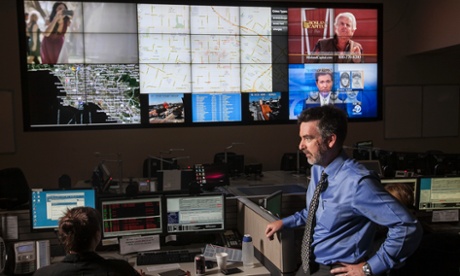
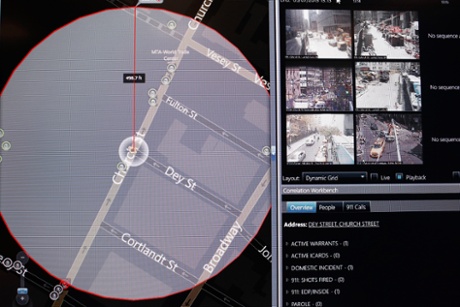
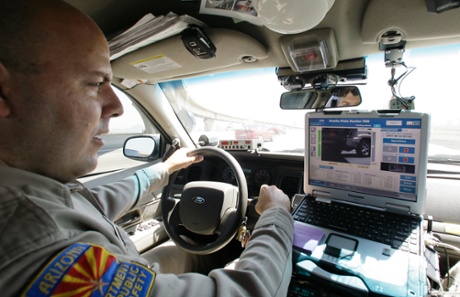
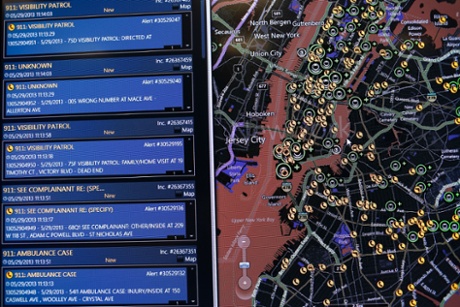

 wikimedia
wikimedia
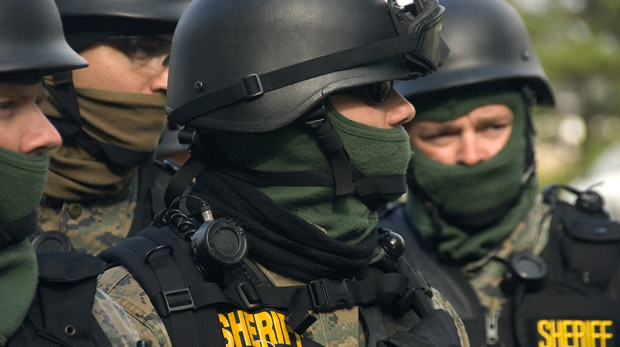









Bookmarks